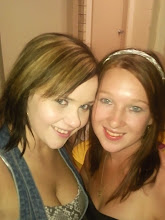The prospect of animations and simulations in the classroom is intersting. Animations are web based and therefore accessible to students at all times. Animations and simulations are useful in situatuons where complex interactions and abstract concepts are involved, or if the real life situaion is unaccessible.
An example of an animation can be found at the following webpage http://nhscience.lonestar.edu/biol/animatio.htm. Science is not one of my better subjects and i found this webiste to be very helpful. The use of animations allows the students to see examples of what the teacher may be explaining. Dales cone shows that demonstrations are a much more effective way of teaching then verbal teaching. (Dale 1960) The use of animations is not only engaging, they are web-based and this gives the students more of a chance to understand what they have learnt in class by accessing them at home.
A review of research literature published in 2004 by the British Educational and Communications Technology Agency (BECTA) found that the use of simulations and modeling in the natural sciences resulted in increased learning and retention by students. (Ascione 2006)
The use of ICT is also proven to enhance learning experiences. (Siemans 2004) I found the following article, Communication and information technology in medical education, about the use of ICT in medical schools and how it has enhanced the teaching abilities for the teachers and the learning experiences for the students. It is a good example of how ICT enhances learning experiences.
The following link http://www.froguts.com/is a link to the webpage of an example of a simulation in which you dissect a frog. This website would be every useful in the instance that a science teacer wouldlike to teach the class how to dissect an animal but cannot suppl 50 odd frogs. The other positive point is that the sudents who have a weak stomach get the chance to dissect a frog, without actually dissecting a real one. (if only this was the case for me at school) :)
E-learning is a source for students from grade 6-12 which offer simulations in math and science. These simulations are referred to as Gizmos. Gizmos help teachers bring research-proven instructional strategies to their classrooms. In conclusion each one of these animations and simulations are effective teaching tools that engage learners.
References
Meris Stansbury (2008) Analysis: How multimedia can improve learning; accessed 14/07/09 http://www.eschoolnews.com/news/top-news/?i=53243
Communication and information technology in medical educationThe Lancet, Volume 357, Issue 9258, Pages 792-796J. Ward, J. Gordon, M. Field, H. Lehmann accesssed 17/8/09 from http://linkinghub.elsevier.com/retrieve/pii/S0140673600041738
ExploreLearning (2009) accessed 17/08/09 from http://www.explorelearning.com/index.cfm
George Siemens (2004) Connectivism: A Learning Theory for the Digital Age, accessed 17 June 2009; http://www.elearnspace.org/Articles/connectivism.htm
Ascione, Laura 2006 Study: Ed Tech has proven effective but more needs to be done for technology to reach its full potential in schools, accessed 19/08/09 from http://www.eschoolnews.com/news/top-news/index.cfm?i=41320&CFID=2844512&CFTOKEN=46694510
Subscribe to:
Post Comments (Atom)

No comments:
Post a Comment